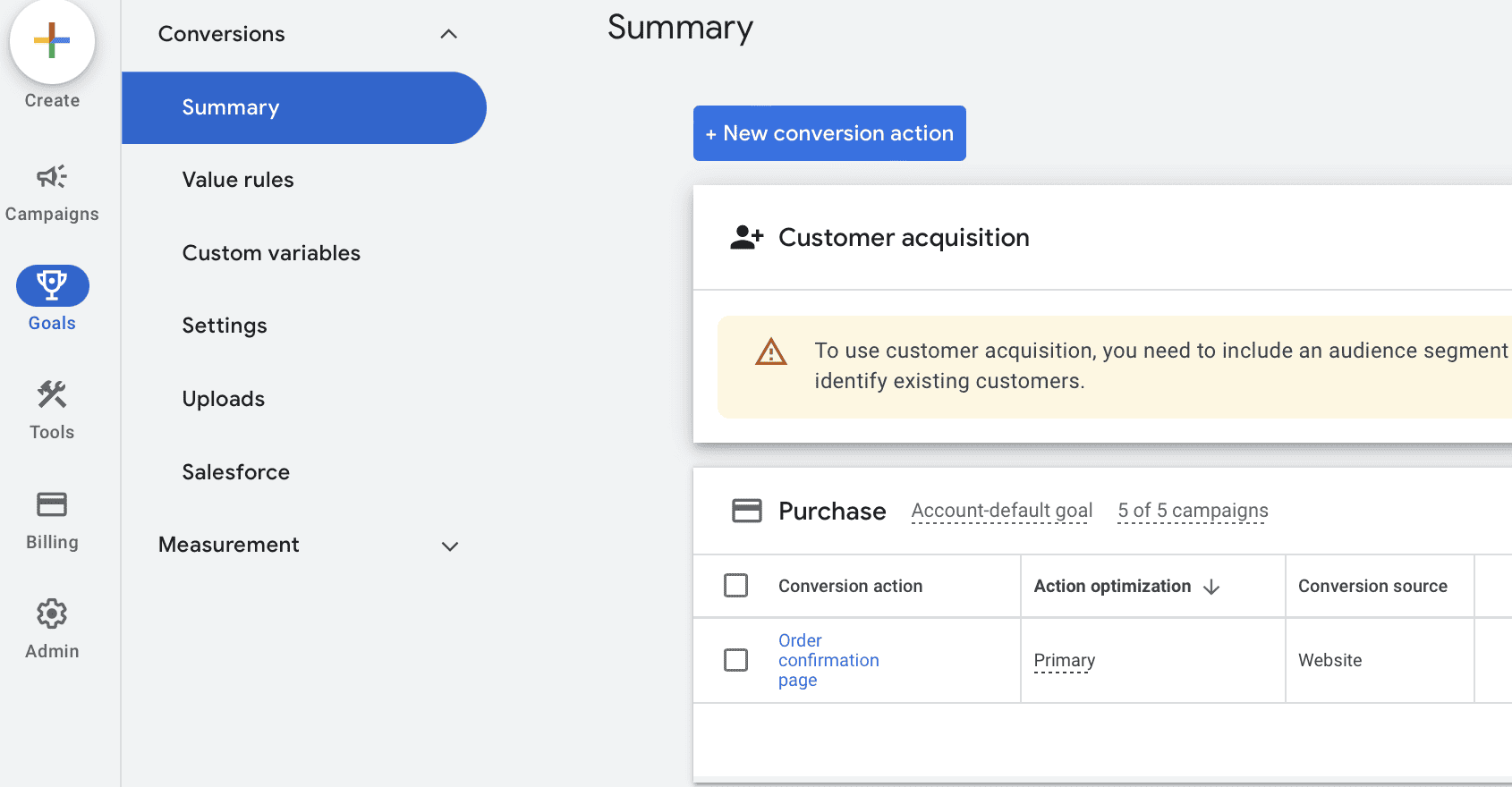One of the biggest advantages of using Google Ads is its incredible machine-learning capabilities. It will look at what’s working and optimize accordingly to get you more of the results you want.
In order to get those results, however, it’s important to make sure that you’re training Google correctly. That means telling the system exactly what results you want, which is where primary and secondary conversions come into play.
We’ve had a lot of questions about the difference between primary and secondary conversions and when to use them, so that’s what we’re going to talk about today.
The Video Breakdown
Not feeling like reading a blog post at the moment? You can watch our video about primary vs. secondary conversions on Google Ads here:
That being said, we’re going to go in a bit more detail in the post, so if you’re new to conversion tracking and optimization on Google Ads, we strongly recommend reading on!
What Are Primary and Secondary Conversions?
When you’re setting up Google Conversions tracking, you’ll see that you can set different actions as “primary” or “secondary” conversions.
Here’s what this means: When you go to your Google Ad account and go to Goals, you can see what actions Google is tracking for conversions and what they’re optimizing for. You’ll see that under “action optimization,” some actions are listed as “primary” and some are “secondary.”

Primary conversions are actions that are reported in the “Conversions” column of Google Ads reporting. They are used for bidding, so long as the standard goal they’re part of is used for bidding on a particular campaign.
Secondary conversions, on the other hand, are tracked for your observation only. They do show up in the “all conversions” reporting column, but they aren’t used for bidding purposes. The only exception to this is if a secondary action is part of a custom goal.
What Actions Should Be Primary Conversions?
This is a question we’ve been asked a lot— which actions should be primary conversions, and which should be secondary?
And specifically— should “begin check out” be a primary conversion? In theory, the customers who start the checkout process should be the same as those who purchase, but that’s not actually how it works.
Here at GrowMyAds, we always recommend “Purchase” being set as a primary conversion— it’s the ultimate goal.
It’s important to remember that you want smart bidding to be learning off of your purchase data, because those are customers who have actually converted.
And that’s exactly why you don’t want to set an initial check out process as a primary conversion: Those customers haven’t yet actually converted and made the purchase.
So while they may be higher intent and relevant to your business, they aren’t actually purchasing. They may be trying to trigger a discount code, or are put off by shipping costs. They could decide at the last moment it’s just not a fit or that they just don’t need it.

No matter what the reason is, this is a high-intent audience, but it’s not the one that you want Google to optimize for— you want them optimizing for the users who actually completed the purchase process.
It’s also worth pointing out that Google will optimize for the results that are easiest to accomplish. Since it’s easier to find customers who begin checkout compared to those who purchase, they could start prioritizing those users to your detriment.
Make Sure You Compare Data of the Two
Purchase data is what you want Google to go off for bidding and optimization purchases— but you still want to track the number of users who begin the checkout process, because you can learn a lot from that, too.
Comparing the number of users who initiate checkout and those who actually purchase can be a valuable learning and troubleshooting tool.
What About Calls as Primary Conversions?
We typically recommend always using “purchases” as primary conversions, but you can also set “calls” as a primary conversion— but only if they play an important role in the conversion process.

For some businesses, a phone call is a high-intent action that may be connected to booking a demo or consultation. If you’re using a form of call tracking like CallRail, that may be a sign that calls are important enough to your business to be a primary conversion.
For others, it’s more likely people calling to ask about information that may not directly be related to sale, or that is less likely to indicate purchase likelihood. In the latter, you’d want calls set as a secondary conversion.
Final Thoughts
Knowing how to work with Google’s system— and how to train it to work for you instead of against you— is just as important as knowing how to create stellar Google Ad campaigns. Even the best-developed campaign can flounder if you’ve got Google optimizing for the wrong placements, and having carefully-selected primary and secondary conversions is an important part of that.
Looking for help managing your Google Ads? We can help. Get in touch here.



